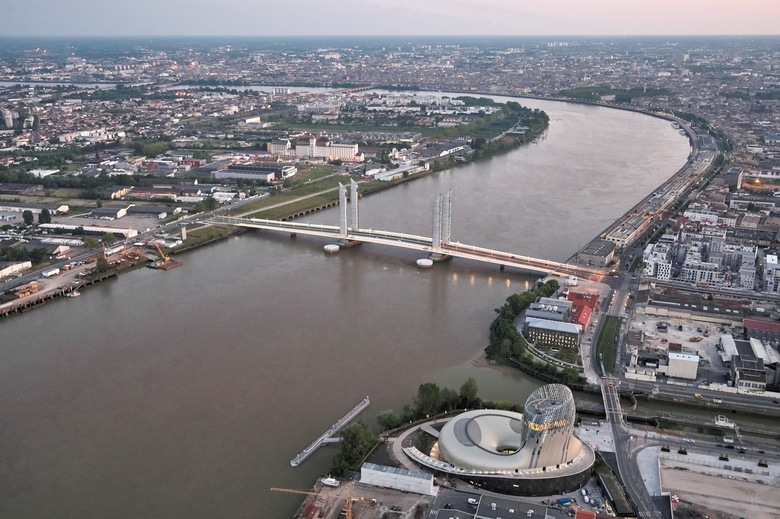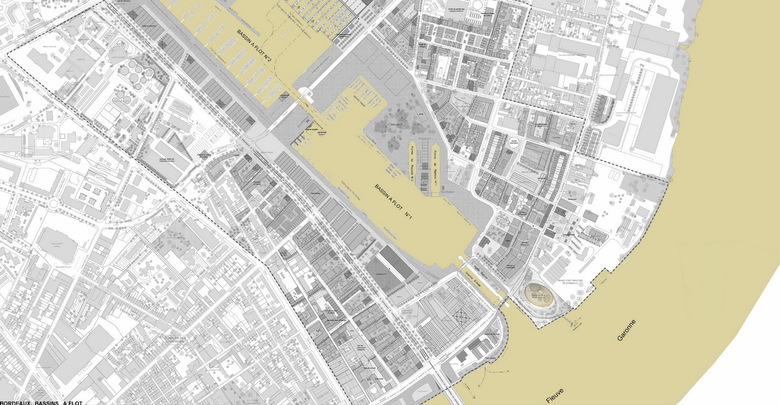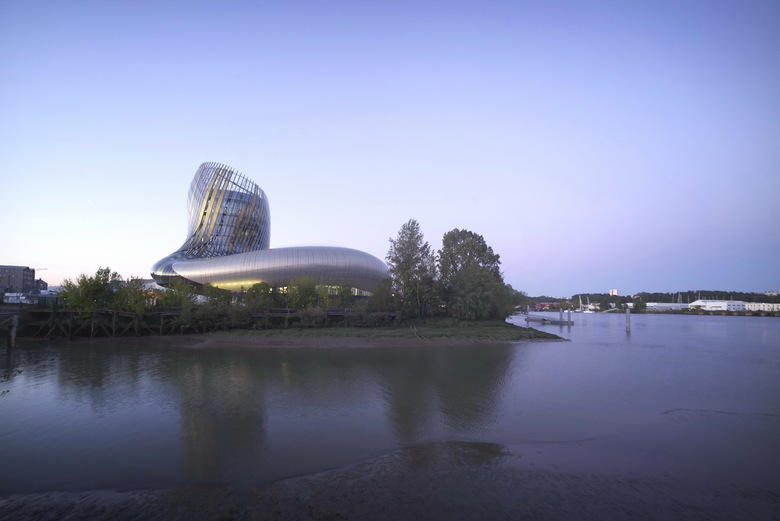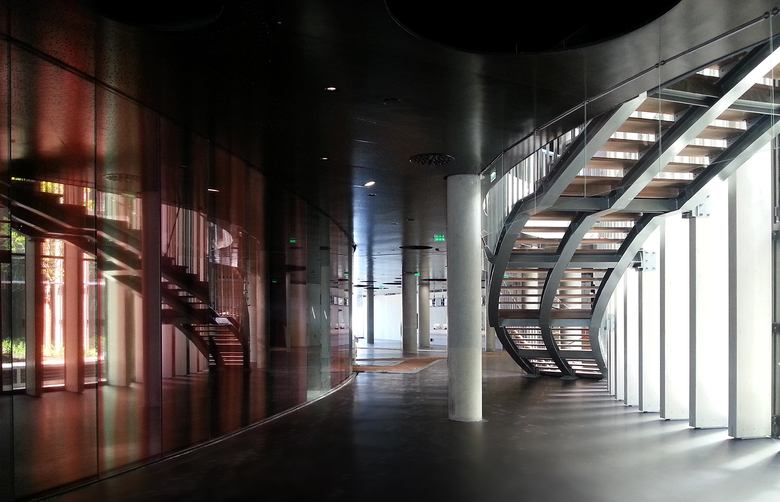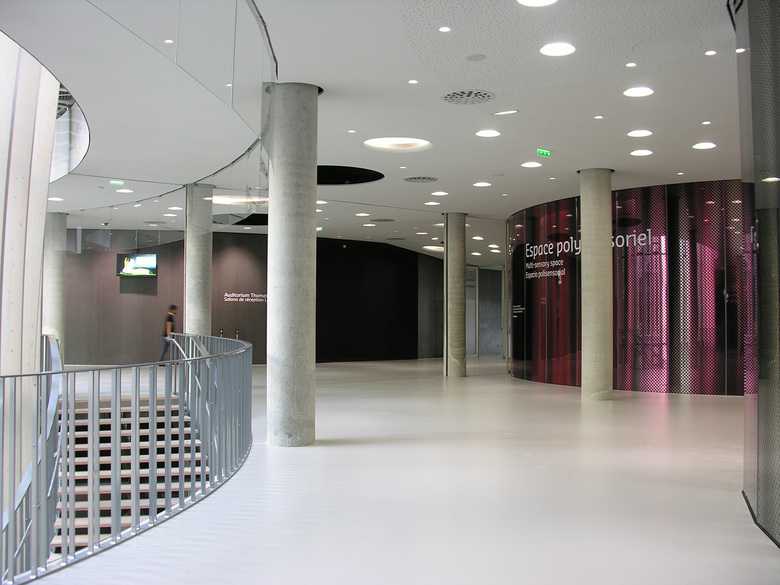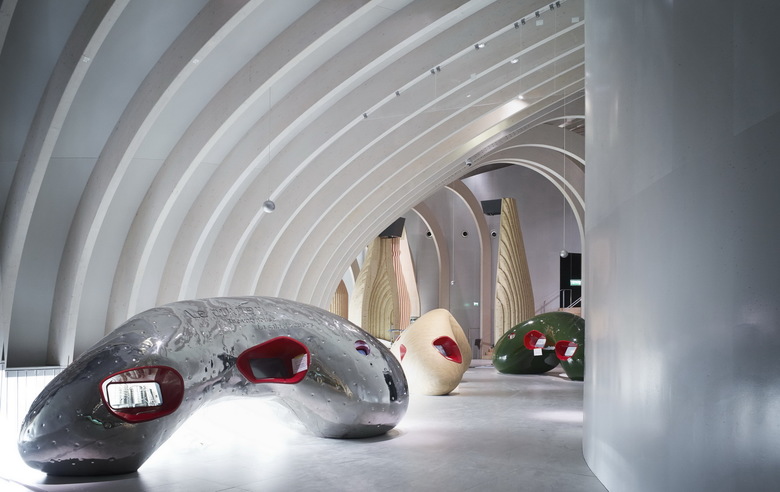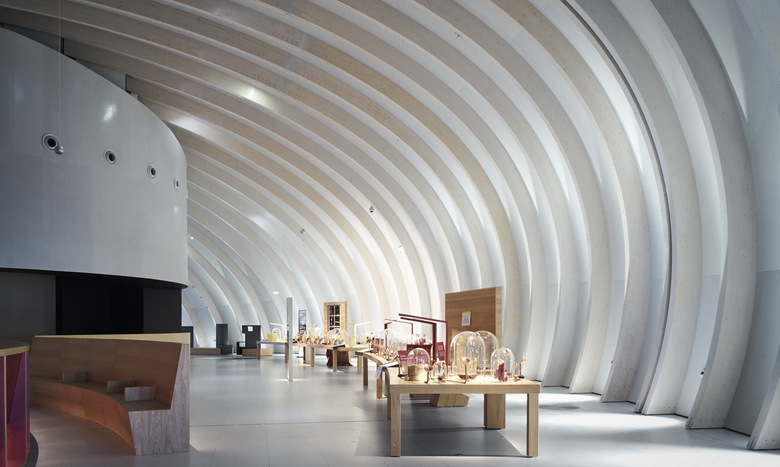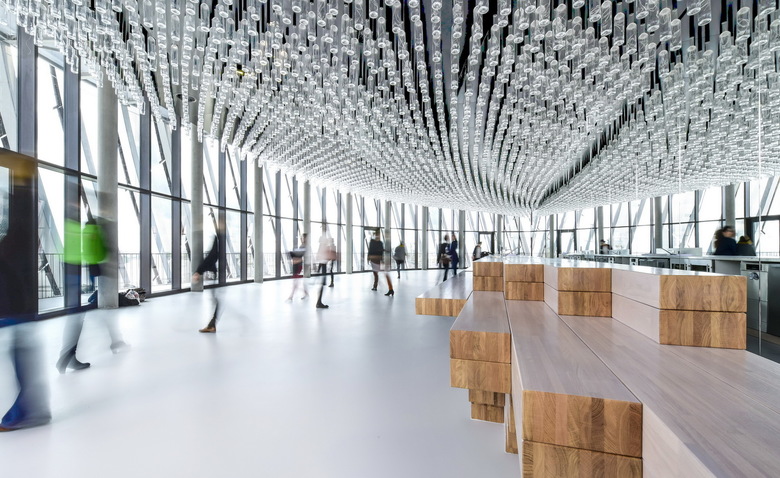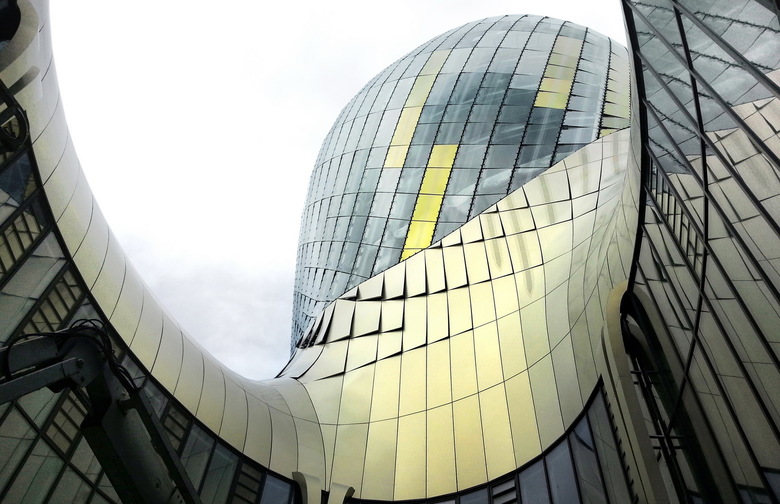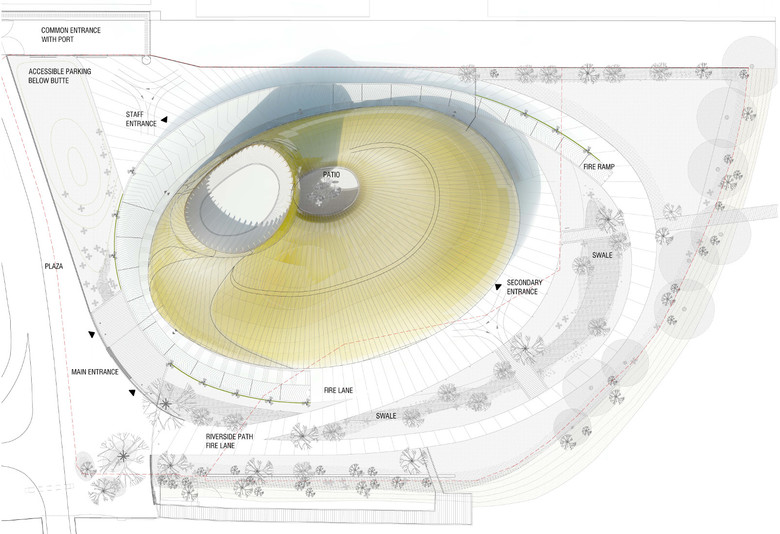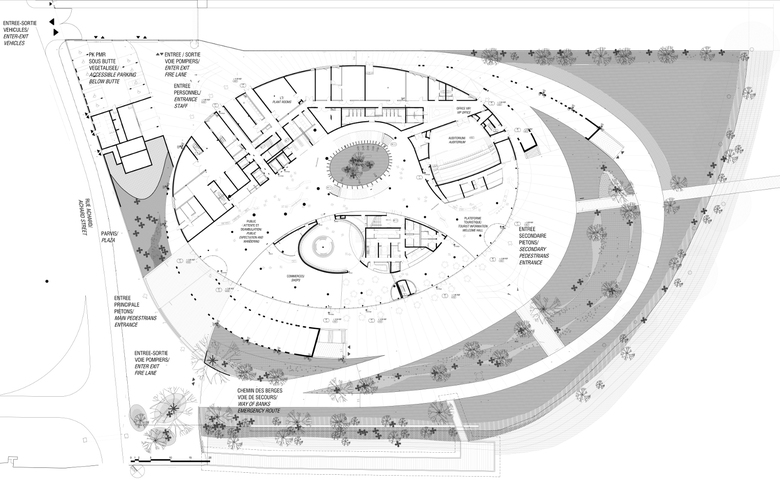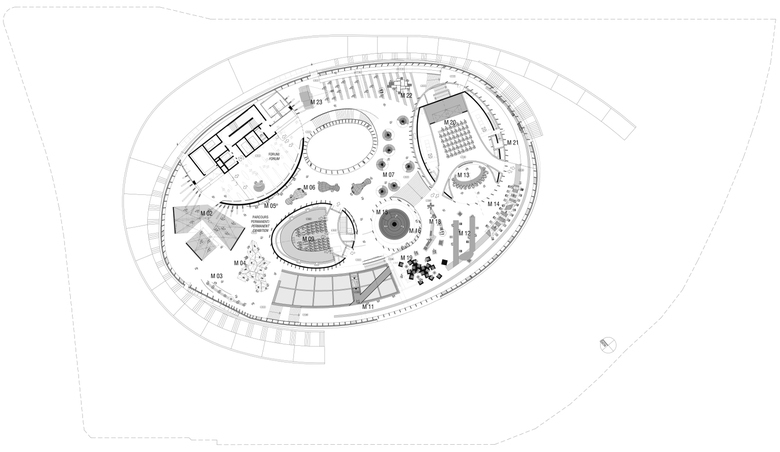Protecting La Cité du Vin
John Hill, Thomas Geuder
12. December 2016
In Bordeaux, XTU Architects have created a new landmark whose amorphous shape and gold-colored facade are widely visible. (Photo: Anaka / XTU)
Think "Bordeaux" and most likely the French wine comes to mind. Yet Bordeaux is also a city that wants to modernize its image, and is doing it partly with contemporary architecture. Herzog & de Meuron's new stadium is one recent example, as is XTU Architects' La Cité du Vin.
Bordeaux's location – about 45 km from the Atlantic by land and directly connected to it via the Garonne river and Gironde estuary – has strategically lended the city its economic importance. More than that, the lean soils, with their water permeability and ability to store heat, are ideally suited for viticulture. This is aided by the microclimate, where pine forests and water bodies contribute to warm summers and mild winters. Therefore it is not surprising that the wine and sea trade were and are important economic factors for the city.
The Garonne flows through the city in a long arch. In the immediate vicinity of the Cité du Vin is the Pont Jacques Chaban Delmas. (Photo: P. Caumes / XTU)
The cityscape of Bordeaux also has a lot to offer visitors, due in part to a well preserved historic center: a mixture of palatial architecture and trading town by the river, with, here and there, narrow houses, towering churches, and old city gates. Even for a city with such a historical heritage, there must be a path to the future. Since the end of last century the city has erected buildings that impact the cityscape and attract global attention: most notably the extension of the Law Courts by Richard Rogers in 1998 and the football stadium that Herzog and de Meuron completed last year.
Location plan (Drawing: XTU)
"La Cité du Vin," the city's newest architectural icon, is a cultural facility with the mission "to promote and share the cultural, universal and living heritage that is wine." It is located in Bacalan, a northern borough of Bordeaux, on the left bank of the Garonne, in the port district of Port de la Lune. The building design by XTU Architects from Paris was inspired by the character of wine. With its sweeping horizontal and vertical movements, the building looks like gnarled vines or wine being swirled in a glass or even eddies in the Garonne. The façade, which shimmers with gold-colored panels interrupted intermittently by glass surfaces, reminds the viewer: what is presented here is one of the most important goods for the city as well as for the region.
The city of Bordeaux hopes for a similar effect to the Guggenheim Museum in Bilbao. (Photo: Julien Lanoo / XTU)
The ground floor is condensed into two opposing stairs that wind around the open patio and lead visitors to the exhibition. (Photo: XTU)
Visitors can access the building from the main entrance on the street side or a secondary entrance facing the river. From the flowing lobby space, two free-standing stairs lead to the exhibits upstairs. Its main draw is the "permanent tour," which was designed by XTU to encourage independent meandering about the space and therefore the world of wine. An imposing feature in the exhibition space is the roof's rib structure, whose materiality and construction are meant to symbolize the trade of wine. The flowing, primarily open spaces were organized to lead visitors from the entrance, through the exhibits, and to the Belvédère on the top floor, where a wide view of the city is offered.
Smoke baffles are installed in the ceiling above the stair openings leading to the exhibit floor. (Photo: XTU)
The necessary fire protection in the open spaces consists of smoke aprons suspended from the ceiling's curved ribs; here one is just visible below the metal clips. (Photo: Julien Lanoo / XTU / Schott)
What sounds architecturally sensible required special attention in terms of fire protection. First and foremost are the necessary means of limiting the spread of smoke within the building in the event of a fire and evacuation. Yet these measures – smoke baffles or curtains – could not interfere with the spatial continuity as envisioned by the architects. So clear-glass baffles (Schott's PYRAN S) are installed on the ceilings above the open stairs. Further, smoke aprons of the same product are placed below the curved ribs as nearly invisible means of smoke control within the exhibition space. The glass panes of PYRAN S are only 5 mm thick, consist of thermally tempered borosilicate glass, and have a high light transmittance, according to Schott's product literature. Therefore visitors can enjoy an undisturbed view across the different levels of the exhibition and reward themselves at the Belvédère atop the building with a glass of wine – included in the entry price.
The core of the exhibition is the "permanent tour" on the second floor, where 19 thematic, self-contained modules are docked. (Photo: Julien Lanoo / XTU)
The Belvédère on the top floor offers visitors – glass of wine in hand – an impressive view over Bordeaux. (Photo: Anaka / XTU / Schott)
The outer skin shimmers in the color gold. (Photo: XTU)
Site plan (Drawing: XTU)
Ground floor plan (Drawing: XTU)
Exhibition floor plan (Drawing: XTU)
A version of this post originally appeared as "Dem Wein ein Haus" on German-Architects.
PROJECT DETAILS
La Cité du Vin
Bordeaux, France
Architecture
XTU Architects
Nicolas Desmazieres + Anouk Legendre
Paris
Project Leaders
Mathias Lukacs, Dominique Zentelin
Project Team
Joan Tarragon, Delphine Isart, Claire Leroux, Thibault Le Poncin, Joan Tarragon, Gaëlle Le Borgne, Stefania Maccagan , Cristina Sanchez
Manufacturer
Schott Technical Glass Solutions GmbH
Jena, Germany
Product
PYRAN S smoke curtain system
Client
City of Bordeaux, France
Scenography
Casson Mann
Structural
SNC-Lavalin
Environmental
Le Sommer Environnement
Competition
April 2011
Completion
2016
Floor Area
12,927 m²

